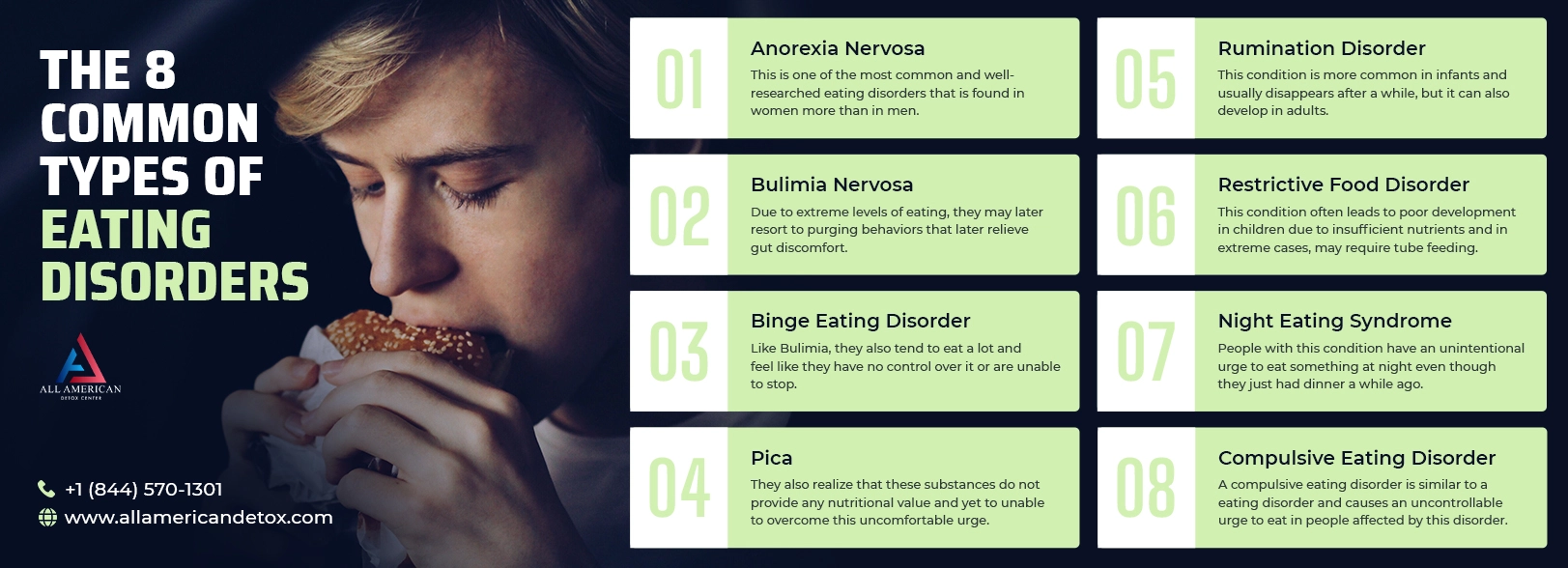Get This Report about Eating Disorder Recovery
Wiki Article
Eating Disorder Recovery Things To Know Before You Get This
Table of ContentsAll About Eating Disorder RecoveryThe 6-Minute Rule for Eating Disorder RecoverySome Ideas on Eating Disorder Recovery You Should KnowAbout Eating Disorder RecoveryThe Main Principles Of Eating Disorder Recovery

ARFID is commonly taken into consideration an extreme form of picky eating. Some children are finicky eaters and also could be detected with ARFID because they don't eat enough calories to create as well as grow. Grownups can be detected with ARFID also, as well as in addition to not creating physically, they may have difficulty with preserving fundamental physical features.
Rumination disorder is an eating condition that entails consistently spitting up food. As soon as spit up, the food may be re-chewed, re-swallowed or spit out. Someone with rumination problem doesn't appear to do this purposefully. However, a person with rumination condition is additionally not likely to appear troubled, upset or disgusted by their constant regurgitation.
The 8-Minute Rule for Eating Disorder Recovery
People that are diagnosed with rumination eating condition are frequently instructed to replace the regurgitation with deep breathing techniques. Orthorexia nervosa is not yet a recognized eating problem diagnosis.Orthorexia is defined as a fascination with consuming healthy and balanced food and preventing junk food. Due to the fact that it is ultimately a psychological wellness problem, orthorexia entails much more rigid reasoning patterns as well as eating routines than those of a person that intends to eat healthy food. An individual with orthorexia is most likely to experience some impairments in their life because of their fixation with healthy and balanced consuming.
Like orthorexia, diabulimia is not yet a formally recognized eating condition. Understanding exactly what diabulimia is can help recognize individuals who are battling with this condition and also may likewise be at threat of creating other consuming conditions.
Our Eating Disorder Recovery Statements
Other Specified Feeding or Eating Condition, more typically described as OSFED, was previously referred to as Eating Disorder Not Or Else Specified (EDNOS). An OSFED eating problem may not fulfill the diagnostic criteria for various other eating disorders however is nevertheless severe and also possibly dangerous. In many cases, OSFED describes a condition that has the basic qualities of anorexia nervosa or bulimia Does not meet the complete analysis criteria for either of these conditions.An individual with an OSFED is simply as likely to have serious clinical repercussions as individuals who fully fit an eating condition diagnosis. Somebody who has an OSFED may Visit This Link be just as most likely to pass away as a result of disordered eating as anybody else with an eating condition. Eating disorders may be brought on by co-occurring psychological wellness conditions and can cause physical problems that can be dangerous.
Acknowledging the very early indication of consuming conditions can make a significant difference in the long-lasting health impacts triggered by the problem. Symptoms and signs of eating disorders can be typically divided right into two sub-categories: behavior (and also emotional) signs and physical signs. Typical emotional and also behavior signs of an eating condition might not constantly be conveniently recognizable.
Not known Details About Eating Disorder Recovery

In scenarios where usual behavioral and emotional signs and symptoms are unable to be observed, a doctor may identify an eating disorder entirely based upon physical indicators (eating disorder recovery). Some common physical signs of an eating disorder consist of: Obvious changes in weight (both gains and losses)Belly pains, Irregularity, Acid reflux, Menstrual abnormalities, consisting of loss of periods or missed out on durations, Trouble focusing or receiving focus, Dizziness or fainting, particularly after standing, Sleeping problems, Cuts and calluses on fingers, Oral issues like enamel disintegration, tooth cavities and tooth level of sensitivity, Dry skin, hair and also nails Like other psychological health and wellness problems, consuming disorders are brought on by a combination of ecological, genetic and also social variables.
An inefficient hormone response to anxiety might suggest a sensitivity to developing an eating condition. Social scenarios associated with sports, modeling or other line of work focusing on body image as well as weight control might affect the development of eating conditions.
The Of Eating Disorder Recovery
Warning indications vary from person to person, but some variables are most likely to affect an individual's danger of developing an eating disorder (eating disorder recovery). Some organic danger aspects that apply to individuals with anorexia, bulimia nervosa or binge eating condition consist of: Having a relative with an eating pop over to these guys problem, Having a member of the family with another psychological wellness condition Perfectionism, Body picture discontentment, History of an anxiousness problemStiff reasoning Weight stigma, Background of diet programs, Being teased or bullied, Limited social media networks, Background of injury As with other mental wellness conditions, eating disorders and addictions frequently co-occur.In addition, as much as 35 percent of people with material use problems also had an eating problem. One of the most common chemical abuse by individuals with an eating disorder include: Alcohol, Laxatives, Emetics, Diuretics, Amphetamines, Heroin, Drug Most of these materials are recognized for their appetite-suppressing adverse effects. Twin medical diagnosis of eating problems as well as drug abuse needs detailed therapy for both problems.
Report this wiki page